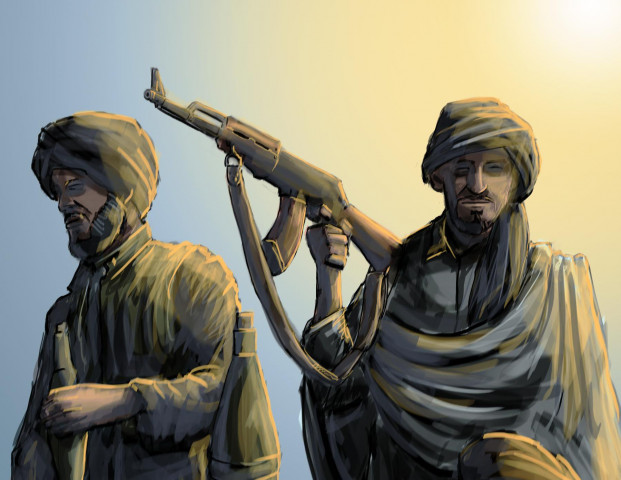'Terrorism down by 16% in K-P tribal districts'
Casualties from terrorist violence declined by 24% in 2019 as compared to the preceding year

PHOTO: FILE (ILLUSTRATION: JAMAL KHURSHID)
 Representational image. PHOTO: REUTERS
Representational image. PHOTO: REUTERSA recent report by a non-governmental research organisation specialising on the region reveals how drastic the fall of militant violence has been. According to the FATA Research Centre’s annual security report for K-P tribal districts, there has been a 16 per cent decline in terrorism incidents and 24 per cent decline in casualties in 2019 compared to the preceding year.
“With exception to South Waziristan districts, a significant decline in terrorism related incidents and resultant casualties was observed in the remaining six districts of the former FATA,” the report stated.
Breaking the figures down, it revealed that 106 terrorist incidents and 54 counter-terrorist incidents were recorded during 2019 as compared to 127 terrorist and 137 counter-terrorist incidents in 2018. “This shows a decrease of 16 per cent in terrorism incidents and 82 per cent in counter terrorism,” it noted. The violent incidents of both sorts resulted in a total of 281 casualties – 110 deaths and 171 wounded – in all the tribal districts, “marking a significant decrease of 24 per cent in overall casualties.”
Discussing the intelligence-based operations (IBOs) carried out by the security forces as part of Operation Radd-ul-Fasad to dilute terrorist groups’ operational capacity, the report pointed out that most of the ones carried out in 2019 were ‘reactive’ in nature. It stated that these IBOs were carried out in response to terrorist incidents.
“In total, 54 IBOs were reported during 2019, compared to 137 such incidents in 2018,” the report highlighted. “Though IBOs were conducted in all the tribal districts of K-P, North and South Waziristan and Bajaur remained the prime focus,” it added. The IBOs in the tribal districts led to the killing of 16 terrorists. Ten other militants were wounded in such actions.
 PHOTO: REUTERS
PHOTO: REUTERSAccording to the report, security personnel remained the main target of terrorism both last year and in 2018. However, casualties among them increase by 12 per cent in 2019 as compared to the preceding year. It cited an increase in IED attacks and ambushes by militants in North and South Waziristan as the main reason for the rise in security forces casualties.
Breaking down terrorism incidents by district, the report noted that North Waziristan remained the most turbulent of the newly merged tribal areas. “Forty-five terrorism incidents were recorded in the district during 2019 compared to 58 such incidents in the previous year. Although the frequency declined by 22 per cent… [it] remained most vulnerable to terrorist threats.”
South Waziristan stood second with 25 terrorist incidents resulting in 17 deaths and 26 people wounded followed by Bajaur and Khyber, which reported 15 and 12 terrorist incidents respectively.













COMMENTS
Comments are moderated and generally will be posted if they are on-topic and not abusive.
For more information, please see our Comments FAQ